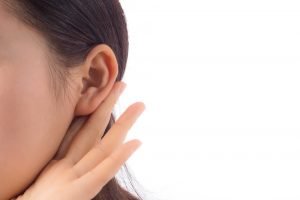Summary
Otitis media is an infection in the ear, specifically affecting the middle ear. This condition commonly occurs when bacteria or viruses from a cold reach the middle ear, causing swelling, pain, and often fluid buildup. Patients with otitis media may experience discharge from the ear. This infection frequently develops when the eustachian tube—a canal connecting the nose, throat, and ear—becomes blocked. When this tube is blocked, mucus can accumulate in the middle ear, creating an environment that encourages infection.
Children are particularly susceptible to otitis media. In addition to frequent colds, their eustachian tubes are smaller and more horizontally positioned, making it harder for mucus to drain into the throat. This increased risk of fluid buildup heightens their chances of developing ear infections and other related conditions.
In many cases, mild otitis media can resolve on its own within one to two weeks, especially if the ear is kept clean and dry. However, if pain is present, a doctor may recommend over-the-counter pain relievers. In cases with fever or persistent symptoms, a doctor might also prescribe antibiotics to treat the infection and help prevent complications.
Table of Contents
Symptoms of Otitis Media

It’s relatively easy to recognize an ear infection. If a person experiences the following symptoms, there is a high likelihood they have otitis media:
- Presence of discharge. Fluid or pus-like discharge from the ear, commonly known as ear discharge or “luga,” is a common symptom of otitis media.
- Fluid drainage from the ear. Clear or cloudy fluid, often mucus-like, may flow from the ear, indicating an infection or blockage in the middle ear.
- Swelling in the ear. Swelling of the ear canal or surrounding areas can result from inflammation due to infection.
- Ear pain. Persistent pain or discomfort in the ear is often one of the first signs of otitis media.
- Foul odor from the ear. An unpleasant smell can accompany discharge, which may indicate bacterial infection.
- Fever. A mild to moderate fever may occur as the body fights the infection, especially in children.
- Hearing difficulty. Temporary hearing loss or muffled hearing can result from fluid buildup in the middle ear.
- Irritability. Infants and young children with otitis media may become unusually irritable or fussy due to discomfort.
- Loss of appetite. Ear pain may make it uncomfortable to chew or swallow, leading to reduced appetite, especially in young children.
- Difficulty sleeping. Lying down can increase pressure in the ear, leading to discomfort and trouble sleeping.
The presence of ear discharge or fluid alone is often a clear sign of infection, even if other symptoms are mild or absent. Although otitis media may resolve on its own, it’s best to consult a doctor to confirm the diagnosis and receive appropriate treatment, especially to prevent complications.
Types of Otitis Media
Otitis media has two main types:
- Acute otitis media. Acute otitis media occurs when the eustachian tube becomes blocked, often due to a cold or allergies. This blockage causes mucus to build up in the middle ear, creating an environment where bacteria or viruses can grow, leading to pain and inflammation.
- Otitis media with effusion. Otitis media with effusion involves fluid buildup (effusion) in the middle ear without active infection symptoms. This condition is often related to an earlier episode of acute otitis media. Even after the pain and inflammation from acute otitis media subside, fluid may still remain in the ear, leading to temporary hearing loss. This hearing impairment can persist for up to three months as the fluid gradually drains.
Both types of otitis media can cause discomfort and impact hearing, particularly in children. While acute otitis media is typically managed with pain relief or antibiotics, otitis media with effusion may require close monitoring to ensure the fluid clears naturally and does not lead to further complications.
Diagnostic Procedures for Otitis Media
Diagnosing otitis media involves various tests and examinations to identify the presence and severity of infection in the middle ear. Here are some common diagnostic procedures used by healthcare providers:
- Medical history and symptom review. The doctor begins by reviewing the patient’s symptoms and medical history, including any recent respiratory infections or chronic health issues that may contribute to middle ear infections. This helps identify potential risk factors and guides further examination.
- Otoscopy. Using an otoscope—a lighted tool for examining the ear canal and eardrum—the doctor looks for signs of infection, such as redness, fluid behind the eardrum, swelling, or bulging. This is one of the most common and essential methods for identifying otitis media.
- Pneumatic otoscopy. This specialized otoscopy test involves gently puffing air into the ear to assess eardrum mobility. In otitis media, fluid buildup behind the eardrum restricts its movement, helping confirm the presence of middle ear fluid or infection.
- Tympanometry. Tympanometry measures the movement of the eardrum in response to changes in air pressure. This test helps determine if there is fluid in the middle ear or if the eustachian tube is blocked, both common indicators of otitis media.
- Audiometry (hearing test). In cases of chronic or recurrent otitis media, an audiometry test may be conducted to evaluate any hearing loss caused by fluid buildup or damage to the middle ear structures. This is particularly important for children, as prolonged hearing impairment can affect language development.
- Middle ear fluid culture. If the infection is persistent or does not respond to standard treatments, a doctor may collect a sample of fluid from the middle ear (through a minor procedure) to identify the specific bacteria or virus causing the infection. This allows for targeted treatment if needed.
- Imaging tests (CT scan or MRI). In rare cases where complications are suspected, such as mastoiditis (infection of the bone behind the ear) or spread of infection to surrounding areas, imaging tests like CT scans or MRIs may be performed to assess the extent of the infection and rule out other conditions.
These diagnostic procedures help doctors accurately diagnose otitis media, assess its severity, and tailor treatment to reduce symptoms and prevent complications. Early diagnosis isparticularly crucial for children to ensure proper treatment and avoid potential long-term effects on hearing and development.
Complications of Untreated Otitis Media
If otitis media is left untreated, it can lead to several complications, some of which may have lasting effects on hearing and overall health. Here are possible complications that may arise:
- Hearing loss. Untreated otitis media can lead to temporary or even permanent hearing loss due to fluid buildup or damage to the structures of the middle ear. In children, this can interfere with language and cognitive development if hearing is impaired over a prolonged period.
- Eardrum rupture. The pressure from fluid buildup in the middle ear can cause the eardrum to rupture, leading to pain and fluid drainage. While minor ruptures may heal on their own, repeated eardrum damage can result in scarring, which may permanently affect hearing.
- Chronic otitis media. Untreated infections can become chronic, causing long-term issues with fluid drainage, recurring infections, and potential damage to ear structures. Chronic otitis media often requires ongoing medical treatment and may lead to other complications.
- Mastoiditis. Otitis media can spread to the mastoid bone, located behind the ear. Mastoiditis can cause bone damage, abscess formation, and may even require surgical intervention if it progresses. This is a serious condition that can lead to other systemic infections if not addressed promptly.
- Labyrinthitis. If the infection reaches the inner ear, it can cause labyrinthitis, leading to dizziness, vertigo, and balance problems. Inner ear inflammation can be especially disruptive to daily life and can sometimes result in lasting balance issues.
- Meningitis. In rare cases, untreated otitis media can lead to meningitis, a life-threatening infection of the brain and spinal cord membranes. This complication requires immediate medical intervention and can have severe consequences if not treated promptly.
- Facial nerve paralysis. Severe or untreated middle ear infections can sometimes cause inflammation of the facial nerve, resulting in temporary or permanent facial paralysis. This occurs when the infection spreads or if the facial nerve is particularly close to the infected area.
- Brain abscess. In very rare cases, untreated otitis media can lead to an abscess in the brain if the infection spreads beyond the ear structures. A brain abscess is a critical condition that requires emergency medical care to prevent severe neurological damage.
Timely diagnosis and treatment of otitis media are essential to avoid these complications. Early intervention helps manage symptoms, protects hearing, and reduces the risk of potentially severe outcomes.
Causes of Otitis Media

The direct causes of otitis media involve the presence of bacteria or viruses that infect the middle ear, typically due to blocked drainage in the eustachian tube. Here are the primary causes:
- Bacterial infection. Bacteria such as Streptococcus pneumoniae and Haemophilus influenzae are common pathogens directly responsible for otitis media. When these bacteria reach the middle ear, they cause inflammation, pain, and fluid buildup.
- Viral infection. Viruses, particularly those associated with respiratory infections, can also infect the middle ear. Common cold viruses like rhinoviruses or respiratory syncytial virus (RSV) can enter the eustachian tube, leading to viral otitis media. Viral infections can also weaken the ear’s defense mechanisms, making it easier for bacterial infections to develop.
- Mucus buildup in the eustachian tube. When mucus cannot drain properly due to a blocked or inflamed eustachian tube, it becomes trapped in the middle ear, providing an environment where bacteria and viruses can grow. This blockage and accumulation of mucus directly facilitate infection.
Directly addressing these underlying infections and maintaining clear eustachian tube function are essential to preventing otitis media and managing the initial stages of the condition.
Prevention of Otitis Media

To help prevent children from developing otitis media, the following precautions can be taken:
- Teach children proper handwashing. Encourage children to wash their hands regularly to remove germs and reduce the risk of infections that can lead to otitis media.
- Avoid exposing children to smoky environments. Keep children away from areas with smoke, as smoke can irritate the respiratory system. If exposure to smoke is unavoidable, ensure their noses and mouths are covered to limit inhalation.
- Protect children from secondhand smoke. Do not allow children to be exposed to cigarette smoke, as it can irritate their airways and increase the risk of respiratory infections, which can contribute to ear infections.
- Keep children up-to-date with vaccinations. Ensure that your child receives all recommended vaccinations, especially those for respiratory illnesses, to help prevent severe colds or flu that could lead to otitis media.
- Position infants correctly during feeding. If your child is an infant, position them properly during breastfeeding or bottle-feeding to prevent milk from flowing into the eustachian tubes. Holding the baby upright helps reduce the risk of fluid entering the middle ear, which can lead to infection.
By following these precautions, parents can help reduce the likelihood of otitis media in children. Good hygiene, avoiding irritants, and staying current with vaccinations are key steps to maintaining ear health.
Risk Factors for Otitis Media

Anyone can develop an ear infection, but certain factors increase the likelihood of experiencing otitis media:
- Young age. Infants and young children are more prone to ear infections because they are less able to clear nasal mucus on their own. Additionally, their eustachian tubes are smaller and more horizontally positioned, making them more susceptible to blockage from mucus buildup.
- Male gender. Studies indicate that boys are slightly more affected by otitis media than girls. This may be partly because boys tend to engage in more outdoor play, increasing their exposure to respiratory infections that can lead to ear infections.
- Genetics. A child may be at higher risk of otitis media if there is a family history of the condition. For instance, parents with naturally smaller or shorter eustachian tubes can pass these structural traits to their children, increasing the likelihood of ear infections.
- Chronic illness. Chronic health conditions, especially those affecting the immune system, like immune deficiencies, cystic fibrosis, or asthma, can increase the risk of developing otitis media. These conditions make individuals more susceptible to respiratory infections, which in turn can increase the likelihood of ear infections.
Understanding these factors can help in taking preventive measures, especially for young children or individuals with chronic illnesses. Good hygiene practices and preventive care can help reduce the risks associated with these factors.
Otitis Media FAQs
Otitis media, or middle ear infection, is a common condition, especially in children. Here are some frequently asked questions about otitis media, its causes, symptoms, and treatments.
- What is otitis media?
Otitis media is an infection of the middle ear, the area behind the eardrum. It often occurs when bacteria or viruses enter the middle ear, usually due to colds, flu, or allergies, causing inflammation, pain, and sometimes fluid buildup. - What causes otitis media?
Otitis media is typically caused by bacteria or viruses that enter the middle ear, often following a respiratory infection or allergies. A blocked eustachian tube can trap fluid in the middle ear, creating a perfect environment for pathogens to grow. - Who is at risk for otitis media?
Young children are most at risk due to their smaller and more horizontally positioned eustachian tubes, which are more easily blocked. Other risk factors include exposure to smoke, frequent colds, allergies, and chronic health conditions like asthma. - What are the symptoms of otitis media?
Common symptoms include ear pain, a feeling of fullness in the ear, hearing difficulty, and sometimes fever. Children may also experience irritability, reduced appetite, and difficulty sleeping. In some cases, fluid may drain from the ear if the eardrum ruptures. - How is otitis media diagnosed?
A doctor will examine the ear with an otoscope to look for redness, swelling, or fluid behind the eardrum. Additional tests, like pneumatic otoscopy or tympanometry, may be used to assess eardrum movement and fluid buildup in the middle ear. - Is otitis media contagious?
While otitis media itself is not contagious, the colds, flu, or other infections that can lead to it may spread from person to person. Practicing good hygiene can help reduce the risk of spreading germs that contribute to otitis media. - Can otitis media go away on its own?
Mild cases, especially those caused by viral infections, may resolve on their own within a few days. However, bacterial infections or cases with persistent symptoms often require medical treatment to prevent complications. - How is otitis media treated?
Treatment depends on the severity of the infection. Mild cases may be managed with pain relievers, warm compresses, or eardrops. Bacterial infections may require antibiotics, while more severe or chronic cases may need more specialized treatment. - Can otitis media cause hearing loss?
Yes, fluid buildup and inflammation in the middle ear can temporarily affect hearing. In severe or untreated cases, otitis media can lead to permanent hearing damage, especially if the infection recurs frequently or becomes chronic. - How can I prevent otitis media?
Preventive steps include keeping up with vaccinations, practicing good hygiene, avoiding smoke exposure, and ensuring that children are fed in an upright position to reduce the chance of fluid entering the middle ear. Regular handwashing and avoiding contact with sick individuals also help reduce risk. - When should I see a doctor for otitis media?
If ear pain persists for more than a day, fever develops, or fluid drains from the ear, it’s essential to consult a doctor. Persistent symptoms, particularly in young children, should always be evaluated to avoid complications.


